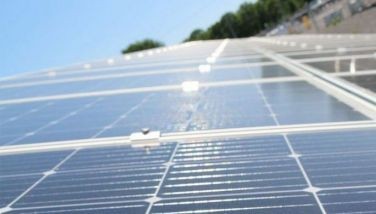World Bank cuts RP growth forecast to 1.9%
MANILA, Philippines - Economic growth in the Philippines is expected to further slow to 1.9 percent this year, marking its worst performance since the Asian financial crisis more than a decade ago, the World Bank said yesterday.
“Growth in 2009 would likely slow to 1.9 percent,” the World Bank said in its latest East Asia report, adding it would be the country’s slowest growth since 1998 when the economy contracted by 0.6 percent.
World Bank senior economist Eric Le Borgne said a series of negative developments over the last four months forced a lower outlook for growth in the region, including the Philippines, as weak global demand for the country’s goods and services slowed down consumption and investments.
“There are also strong indications that the anticipated recovery for 2010 has diminished,” Borgne said, adding that a 2.8-percent growth for the Philippines next year remains dependent on how the developed countries deal with the global recession.
The World Bank projection compares to forecasts of 2.5 percent by the Asian Development Bank and 3.5 percent by the International Monetary Fund.
The government’s own forecast is a 4.4-percent growth in gross domestic product (GDP), down from 4.6 percent last year and 7.2 percent in 2007 – the fastest pace in 30 years.
The Arroyo administration said it plans to achieve the 4.4-percent rate through massive government spending to take up the slack of reduced economic activity.
The World Bank attributed the weak 2009 economic outlook to two main culprits: the country’s vulnerability to a slowdown in the amount sent home by Filipinos working abroad and an ambitious size of the stimulus package, which could have a limited impact and be undermined by weak tax collections.
“Domestic demand, boosted to a large extent by strong remittances since 2001, has been the most important growth driver for the economy,” the report said.
Last month, the World Bank said money sent home by overseas Filipino workers (OFWs) will contract by 4.4 percent this year as a result of the global slowdown, lower than the bank’s projected five to eight percent fall in remittance flows to developing countries. The latest outlook was also bleaker than the previous forecast of 0.9 to 5.7 percent the World Bank made in November last year.
But the Bangko Sentral ng Pilipinas (BSP) is more optimistic. It said remittances are likely to stay flat in 2009 at around last year’s level of $16.4 billion. In January, the BSP reported a 0.1-percent growth in remittances compared to the same period last year.
The multilateral lender likewise described the government’s P330-billion stimulus package (labeled the Economic Resiliency Plan or ERP) as “ambitious” since it accounts for 4.1 percent of the country’s GDP.
The ERP is focused on providing jobs, even if temporary, to those who are displaced as their employers, whether here or abroad, close shop or reduce operations as worldwide sluggish consumption and credit flows squeeze their ability to stay afloat.
The World Bank cited the government for postponing its medium-term balanced budget goal in 2011 to make way for the hiked spending. It noted, however, that the actual impact of the stimulus package in 2009 would be limited as government spending plans could be undermined by a huge budget deficit, no thanks to lower-than-target tax collections.
- Latest
- Trending


























